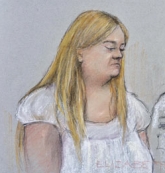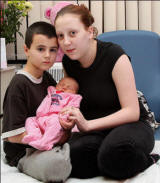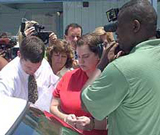Sexual Offenders - Reference materials & scholarly
papers:
Allen, Craig. (1991). Women and Men Who Sexually Abuse Children:
A Comparative Analysis. Brandon, VT:
Safer Society Press.
Berendzen, R, & Palmer, L. (1993). Come here: A man overcomes the
tragic aftermath of childhood sexual abuse. New York: Villard Books.
Elliott, Michele (Ed.). (1993). Female Sexual Abuse of Children.
New York: Guilford Press.
Mike Lew, author of Victims No Longer, an excellent book for male
survivors of sexual abuse, says of this book: "Michele Elliott and her colleagues
guide us through denial, stereotypes, and conventional misinformation to
an unflinching examination of painful realities. Theoretical, research,
and clinical chapters help to forge a new understanding of the issues and
set directions for further exploration. Many survivors, both male and female,
will finally have their experiences validated. The powerfully moving survivors'
stories will be vital tools for survivors in their healing and will aid
therapists in understanding the complexities of recovery from sexual abuse
by females" (from the cover).
Mathews, R, Matthews, J. K., & Speltz, K. (1989). Female Sexual
Offenders: An Exploratory Study. Brandon, VT: Safer Society Press.
Miletski, H. (1997). Mother-Son Incest: The Unthinkable Broken
Taboo. Brandon, VT: Safer Society Press.
Saradjian, J. & Hanks, H. (1996). Women Who Sexually Abuse Children:
From Research to Clinical Practice (Wiley Series in Child Care and Protection)
NY: John Wiley & Sons.
The papers:
Allen, C. M., & Pothast, H. L. (1994). Distinguishing characteristics
of male and female child sex abusers. Journal of Offender Rehabilitation,
21, 73-88.
Bachmann, K. M., Moggi, F., Stirnemann-Lewis, F. (1994) Mother-son incest
and its long-term consequences: A neglected phenomenon in psychiatric practice.
Journal of Nervous and Mental Disease, 182, 723-725.
Banning, A. (1989). Mother-son incest: Confronting a prejudice. Child
Abuse & Neglect, 13, 563-570.
Baron, R. S., Burgess, M. L., & Kao, C. F. (1991). Detecting and labeling
prejudice: Do female perpetrators go undetected? Personality and Social
Psychology Bulletin, 17, 115-123.
Briere J., & Elliott D.M. (2003). Prevalence and psychological sequelae
of self-reported childhood physical and sexual abuse in a general population
sample of men and women. Child Abuse & Neglect, 27, 1205-1222. [includes
statistics on females' perpetrating sexual abuse against boys and girls]
Condy, S. R., Templer, D. I., Brown, R., & Veaco, L. (1987). Parameters
of sexual contact of boys with women. Archives of Sexual Behavior, 16,
379-394.
Faller, K. C. (1987). Women who sexually abuse children. Violence
and Victims, 2, 263-276.
Fehrenbach, P. A., & Monastersky, C. (1988). Characteristics of female
adolescent sexual offenders. American Journal of Orthopsychiatry, 58,
148-151.
Finkelhor, D., Meyers, M. W., & Burns, N. (1988). Nursery crimes:
Sexual abuse in day care. Beverly Hills, CA: Sage.
Finkelhor, D., & Russell, D. (1984). Women as perpetrators. In D. Finkelhor
(Ed.), Child sexual abuse: New theory and research (pp.171-187).
New York: Free Press.
Harper, J. F. (1993). Prepuberal male victims of incest: A clinical study.
Child Abuse and Neglect, 17, 419-421.
Johnson, R. L., & Shrier, D. (1987). Past sexual victimization by females
of male patients in an adolescent medicine clinic population. American
Journal of Psychiatry, 144, 650-652.
Johnson, T. C. (1989). Female child perpetrators: Children who molest
other children. Child Abuse & Neglect, 13, 571-585.
Krug, R. S. (1989). Adult male reports of childhood sexual abuse by mothers:
Case descriptions, motivations and long-term consequences. Child Abuse
and Neglect, 13, 111-119.
Lawson, C. (1993). Mother-son sexual abuse: Rare or underreported? A
critique of the research. Child Abuse and Neglect, 17, 261-269.
Marvesti, J. (1986). Incestuous mothers: American Journal of Forensic
Psychiatry, 7, 63-69.
McCarthy, L. M. (1986). Mother-child incest: Characteristics of the offender.
Child Welfare, LXI, 447-459.
O'Conner, A. (1987). Female sex offenders. British Journal of Psychiatry,
150, 615-620.
Sarrel, P. M., & Masters, W. H. (1982). Sexual molestation of men by
women. Archives of Sexual Behavior, 11, 117-131.
Wahl, C.W. (1960). The psychodynamics of consummated maternal incest.
Archives of General Psychiatry, 3, 96/188-101/193.
Wakefield, H., Rogers, M., and Underwager, R. (1990). Female sexual abusers:
A theory of loss. Issues In Child Abuse Accusations, 2, 181-195.

Correctional Services Canada
Service correctionnel du Canada
LITERATURE REVIEW ON FEMALE SEX OFFENDERS
Although there is an increasing literature on male sex offenders,
there is a noticeable dearth of information concerning female sex
offenders. Most of the work in the area has come from three of the
largest prison programs for female sex offenders in Missouri, Minnesota,
and Kentucky.
OVERALL NEGLECT OF FEMALE SEXUAL OFFENCES
For a variety of societal reasons, female sexual abuse is likely to
remain unnoticed. Some researchers have found that the incidence of
sexual contact with boys by women is much Read More ..evalent than is
contended in the clinical literature (Condy, Templer Brown & Veaco,
1987). Despite society's increasing concern about sexual assault, there
may be several reasons for the under-reporting of female sexual abuse of
both child and adult victims. Traditionally, society has held
preconceptions of women as non-violent nurturers. Women in general, and
mothers Read More ..ecifically, have Read More ..eedom than men to touch children
(Marvasti, 1986). Therefore, a man may be Read More ..sily perceived as
abusive when touching a child than when a woman touches a child in a
similar manner (Plummer, 1981). Further, sexual offences perpetrated by
women are often incestuous in nature and children may be reluctant to
report sexual contact with a parent on whom they are dependent (Groth,
1979). Health care workers are often unable to detect mother-child
incest as mothers often accompany their children to the doctor's office.
This may serve as a barrier to detecting sexual abuse of the child
(Elliott & Peterson, 1993). The medical profession is only reluctantly
becoming sensitive to the fact that females can, in fact, be
perpetrators of sexual abuse (Wilkins, 1990; Krug, 1989).
EXAMEN DE LA DOCUMENTATION SUR LES DÉLINQUANTES SEXUELLES
La documentation sur les délinquants sexuels s'accroît alors que
l'information sur les délinquantes sexuelles est clairement déficiente.
La plupart des travaux en ce domaine proviennent de trois des programmes
les plus importants établis pour les délinquantes sexuelles au Missouri,
au Minnesota et au Kentucky.
DÉSINTÉRESSEMENT GÉNÉRAL À L'ÉGARD DES INFRACTIONS SEXUELLES
COMMISES PAR DES FEMMES
Pour diverses raisons sociales, les mauvais traitements sexuels
infligés par les femmes demeurent généralement cachés. Certains
chercheurs ont découvert que l'incidence des contacts sexuels entre des
femmes et des garçons est beaucoup plus élevée que ne l'estime la
documentation clinique (Condy, Templer Brown et Veaco, 1987). En dépit
du fait que la société se préoccupe de plus en plus de l'agression
sexuelle, plusieurs raisons pourraient faire que l'on parle moins des
cas de mauvais traitements sexuels infligés par des femmes à des enfants
ou à des adultes. La société a toujours perçu les femmes comme des
nourricières non violentes. Les femmes en général, et surtout les mères,
ont plus de latitude pour toucher les enfants que les hommes (Marvasti,
1986). Par conséquent, un homme qui touche un enfant de la même manière
que le fait une femme peut être plus facilement perçu comme un agresseur
(Plummer, 1981). En outre, les infractions sexuelles commises par des
femmes sont souvent de nature incestueuse et les enfants peuvent hésiter
à dénoncer un contact sexuel avec un parent dont ils dépendent (Groth,
1979). Les travailleurs du domaine de la santé sont souvent incapables
de déceler les cas d'inceste entre l'enfant et la mère car cette
dernière accompagne souvent l'enfant au bureau du médecin. Cela peut
empêcher de dépister les mauvais traitements sexuels infligés à l'enfant
(Elliott et Peterson, 1993). La profession médicale prend à contrecoeur
conscience du fait que les femmes peuvent en fait infliger de mauvais
traitements sexuels. (Wilkins, 1990; Krug, 1989).
Read More ..







